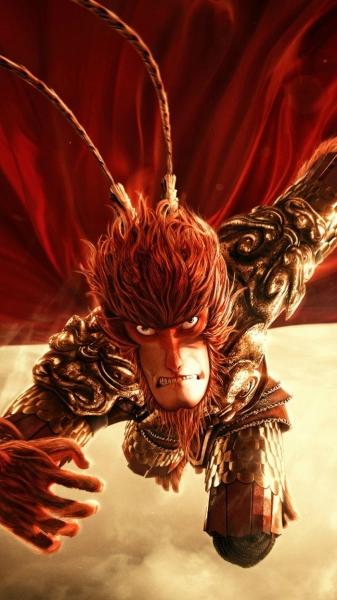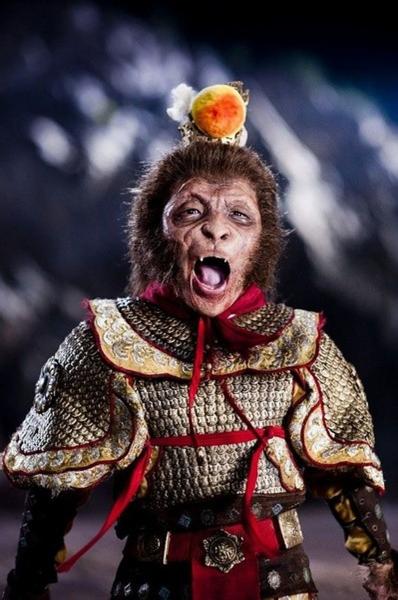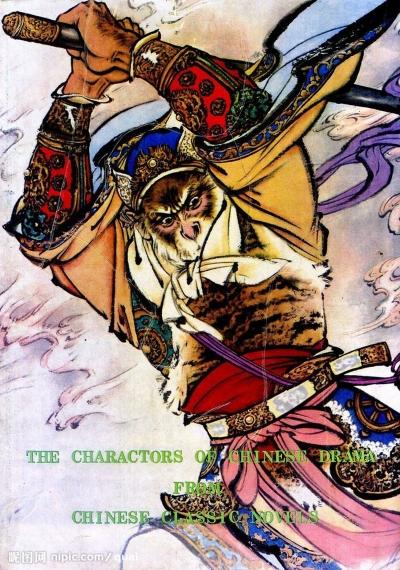


"the Monkey King, the Great Sage of Qitian, is like a dark iron, with a fiery eye and a golden eye. He is immortal and has seventy-two changes." With the popularity of the animated film The Return of the Great Sage on the Journey to the West, the Monkey King is back.
When I was a child, I spent every summer vacation playing The Journey to the West in turn on TV (which revealed my age). When I first saw the Supreme Treasure in A Chinese Odyssey, I felt deeply uncomfortable. Compared with the Monkey King of six-year-old children, it was too ecological. In "Demon Journey to the West", the Monkey King’s image can be called a thriller, not like a monkey, but similar to an orangutan. The Monkey King in the conscience masterpiece The Return of the Great Sage has a long face, which is totally a mandrill (Xiāo). Don’t like climbing, sleep in the tree, monkey family. )
It seems that the image of the Monkey King, which is deeply rooted in people’s hearts, has been re-imagined and shaped. It’s just that the reporter of Wuhan Evening News, who has nothing to worry about, suddenly wants to know what kind of monkey the Monkey King is.
Wu Cheng’en was once a magistrate in the hometown of monkey art.
Mandrill, Baboon, Golden Monkey, Ape, Orangutan, Ling Ming boulder, Red Horse Monkey, Arm Ape, liu er Macaque (I don’t know what I’m talking about) … This is all-round speculation of netizens, but reporters tend to think that the Monkey King is a macaque.
This has to start from Wu Cheng’en.
According to the Records of Xinye County in the fifty-first year of Kangxi in Qing Dynasty and Xinye County in the nineteenth year of Qianlong, Wu Cheng’en and Gong Shi were born in Tongcheng, Anhui Province, and were appointed as Xinye County magistrate in the thirty-fifth year of Jiajing (1556-1557). Xinye County is a county under the jurisdiction of Nanyang City, Henan Province. )
In Xinye County Records and Minghuan Volume, it is said that it is "endowed with sensitivity, cautious and self-sustaining, punishing officials, forbidding vagrants, repairing schools, praising chastity, punishing officials and being honest, and officials are afraid of people …"
During Wu Cheng’en’s two years in Xinye County, he not only achieved excellent moral performance, but also studied the folk art of Xinye deeply.
It is said that The Journey to the West’s first portrayal of the form of immortal stone, the predecessor of the Monkey King, is based on the existing Han platform in Xinye. The three-dimensional dimensions of the immortal stone are exactly the same as those of the Han Parliament Platform.
Moreover, Xinye dialect is widely used in The Journey to the West. For example, Xinye calls jiaozi "flat food" and animals "restless" as "bony redundancy". Such dialects can be found everywhere in The Journey to the West.
Xinye also has a title of "hometown of monkey art", and Xinye monkey drama has a history of more than two thousand years. In recent years, on a large number of Chinese painting bricks unearthed in Xinye, besides acrobatics and games, wonderful pictures of monkeys, dogs and people hunting and playing together are not uncommon. By the Ming and Qing Dynasties, monkey playing among the people in Xinye, Henan Province had become popular.
Most monkey players will pass on this business from generation to generation as a livelihood to support their families. Monkey artists have a pair of shoulder poles and two boxes, and their footprints are all over the country. Everywhere, put down the pole with its load, don’t have to set up a stage, just hold the monkey in an empty field for a while, raise your little whip and shout, and then start the performance. Little hairy monkeys put on masks and costumes, imitating people’s behavior, climbing poles, carrying water, riding bicycles, plowing fields and walking tightrope … (Seeing here, I thought of The Journey to the West, where the Monkey King was wearing robes and standing on the table eating noodles)
During his tenure, Wu Cheng’en paid attention to the folk customs of Xinye County, especially interested in Xinye Monkey Opera, and observed the vivid monkey modality in detail. This experience deeply influenced his portrayal of the Monkey King.
The reporter learned that the monkeys used in the new wild monkey show are Chinese macaques, second-class wild protected animals, which are physically close to humans and have high medical research value and performing arts value.
Hu Shi said that the monkey was imported.
Of course, Hu Shi must seriously disagree with this statement. He once said, "I always suspected that this miraculous monkey was not made in China, but was imported from India …" (It seems that journalists are not the only ones who have nothing to do. ) Hu Shi also found a monkey Ha Numan in the oldest Indian epic Ramayana, which he thought was the earliest image of the Monkey King.
Chen Yinque, a great historian, was very familiar with Buddhist scriptures, which not only verified Hu Shi’s guess, but also used another book, The Classic of Virtue and Foolishness, as a proof. He found that the story of "making a scene in Heaven" originally originated from two unrelated Indian folk stories, and after it was introduced to China, the Buddhist scriptures disseminators merged into one intentionally or unintentionally.
The establishment of Dunhuang studies at the beginning of the last century added some new historical materials to the evolution of The Journey to the West’s character stories. Mainly murals, there are images of a single person walking on foot with his back on his back, and images of Hu people leading horses like "monkey walkers", which shows that the stories of characters have changed throughout the ages.
In recent years, some Japanese scholars have put forward that the image of the Monkey King originated from Buddhist scriptures. They found out the accounts of macaques, apes or monkeys’ deities in some Buddhist classics, and thought that they were the prototype of the Monkey King. This kind of macaque said that it coincides with the reporter’s guess.
Of course, after thinking about it so much, the reporter still prefers the way the Monkey King blinks as a six-year-old boy, and the Bo Huang version is too heavy on taste. However, "Dragon Ball" seems to be too cute. After so many years, I have never understood what the child paper with hedgehog head has to do with the Monkey King.
Link: the Monkey King may also be a person.
In the third volume of Biography of Song Monks, Wukong is a native of Yunyang, Jingzhao. His original surname is Che and his name is Fengchao. He is a distant descendant of Tuoba, a post-Wei dynasty. He was gifted and filial to his parents since he was a child. Before becoming a monk, he paid homage to four special envoys in Zuoweijing Prefecture. He was ordered to escort the envoys of the State of Bin (the name of the Western Regions of Han Dynasty, now Kashmir) back to China, and suddenly fell ill in the capital of Bin. He made a vow when he was ill, and after he recovered, he became a monk, named Dharma Tuodu. In the second year of Tang Suzong’s reign in Germany, Wukong was 29 years old. He was instructed to study fundamental laws and regulations in the country of Jasmino, and he wandered around and visited famous temples and pagodas.
After finishing his studies, Wukong went to the seaside of Gudu National City and entered the city from the south bank. Suddenly, the mountains shook, and the rainstorm was like a note. He fled to a big tree to shelter from the rain. It happened that many businessmen also came to shelter from the rain. Merchants said that this was because someone took the Buddha relic and caused the dragon god to be angry. Wukong prayed to the dragon god, and it was only after the rain cleared up. After he arrived in Qiuci, he devoted himself to translation, and translated The Ten Strengths and Three Classics of Van Gogh’s Ten Return Wheels into Chinese. After staying in the western regions for nearly 40 years, in the fifth year of Zhenyuan, he returned to the capital, entered the Buddha’s tooth relic, and was named General Kong Zhuangwu to try Tai Changqing, and entered Zhangjing Temple for practice. By this time, he was over 60 years old.
Monk Wukong and Master Xuanzang are both Buddhist scriptures in history. In the history of China, the first person who went to the Western Heaven to learn Buddhist scriptures was Zhu Shixing, a native of Yingchuan in the Cao Wei era. This Zhu surname may be a source of Pig’s surname. In the earliest stories about the journey to the west, such as "Interpretation of Proverbs in Park Tong", there was a black pig named Zhu Bajie, who was obviously the predecessor of Zhu Bajie.
关于作者